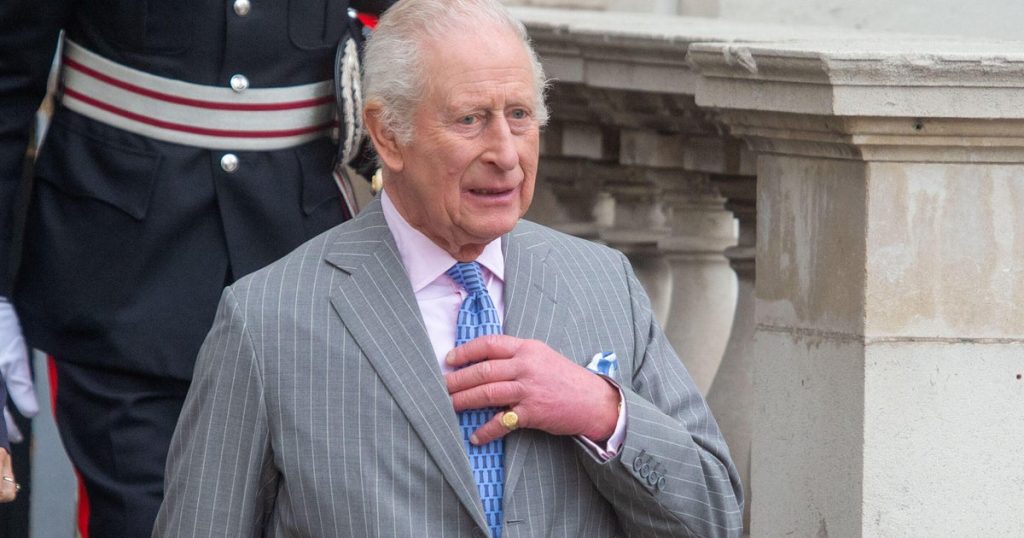King Charles III faced a health scare following a recent cancer treatment that resulted in his hospitalization in London for observation. The 76-year-old monarch’s incident has reignited discussions about his ongoing battle with cancer, which he first disclosed more than a year ago. Although Buckingham Palace indicated that the hospitalization was due to temporary side effects, concerns for his health continue to mount as the king was seen publicly just days prior, appearing healthy and engaged.
| Article Subheadings |
|---|
| 1) Health Incident and Hospitalization Details |
| 2) Public Reaction and Observations |
| 3) King Charles’ Recent Activities |
| 4) The History of Cancer in the Royal Family |
| 5) Future Engagements and Public Duties |
Health Incident and Hospitalization Details
On Thursday, the monarchy experienced a significant health scare as King Charles III was admitted to a hospital in London following a scheduled cancer treatment. Buckingham Palace reported that the king faced temporary side effects from his treatment that necessitated a brief observation period. This unexpected turn of events has heightened concerns about the health of the 76-year-old monarch, who has been open about his cancer diagnosis—details of which remain undisclosed to the public. The king’s treatment plan and exact type of cancer have not been made public, which raises further questions about his overall health and the implications of this incident on future engagements.
Public Reaction and Observations
The news of King Charles III’s hospitalization resonated across the nation, drawing immediate attention from the public and media alike. Many expressed concern and disbelief, especially following sightings of the king just a day prior at a farm exhibition in London, where he appeared in good spirits, smiling and engaging with attendees. Julian Mati, a tourist who witnessed the king leave Clarence House after his hospital visit, expressed relief at seeing Charles looking healthy and well. “We were horrified when we heard the news yesterday,” he stated. The emotional response highlights the connection the public feels towards their monarch, especially amid health concerns.
King Charles’ Recent Activities
Leading up to his hospitalization, King Charles III had maintained a busy and active schedule. Following a brief hiatus from public duties, he resumed his engagements in April of the previous year. His recent activities include a visit to Northern Ireland alongside Queen Camilla and meetings with significant world leaders, including Ukraine’s President Volodymyr Zelenskyy. These engagements illustrate the king’s efforts to uphold his royal responsibilities, even while managing his health challenges. Notably, he successfully completed his first foreign trip during treatment to Australia in July 2024, demonstrating resilience amid adversity.
The History of Cancer in the Royal Family
Cancer has profoundly affected the British royal family in recent years. Most notably, Catherine, the Princess of Wales, shared her own battle with the illness, announcing her remission just two months ago after a ten-month treatment journey. Her diagnosis was made following abdominal surgery, leading to a preventative chemotherapy regimen. Furthermore, former British Prime Minister Boris Johnson claimed in his memoir that the late Queen Elizabeth II experienced bone cancer before her death in September 2022, further emphasizing the impact of this disease within the royal lineage. King Charles’ situation, viewed within this context, follows a worrying trend that has affected several key members of the royal family.
Future Engagements and Public Duties
Despite the recent health scare, protocol indicates that King Charles III’s planned engagements will continue, pending medical advice. As of the latest updates, an upcoming trip to Italy with Queen Camilla remains scheduled, illustrating the monarchy’s intention to maintain its commitment to public duties. However, preparations and protocols are likely being adjusted to accommodate any necessary medical considerations following the king’s latest health incident. The palace remains focused on ensuring the king’s health while fulfilling their royal responsibilities, reflecting a balance between personal well-being and public expectation.
| No. | Key Points |
|---|---|
| 1 | King Charles III was hospitalized for observation due to temporary side effects from cancer treatment. |
| 2 | Public reaction has been one of concern and relief following the king’s health scare. |
| 3 | The king has been actively engaging in public duties despite ongoing health challenges. |
| 4 | The royal family has experienced multiple cancer diagnoses affecting several prominent members. |
| 5 | Future engagements are still planned, demonstrating the monarchy’s commitment to fulfill its duties. |
Summary
The recent hospitalization of King Charles III marks a significant moment for the British monarchy as concerns surrounding the health of its leader resurface. As the king continues treatment for cancer, the public remains engaged and supportive, reflecting their emotional connection to the royal family. With scheduled engagements still ahead and a history of health challenges within the royal family, the situation underscores the complexities of balancing personal health with public responsibilities.
Frequently Asked Questions
Question: What type of cancer does King Charles III have?
The exact type of cancer that King Charles III has has not been disclosed to the public by Buckingham Palace.
Question: How has the public reacted to King Charles III’s health scare?
Public reaction has been one of deep concern and relief, especially after seeing the king in good spirits just before the incident.
Question: What past engagements has King Charles III undertaken related to his health?
Despite his health challenges, King Charles III has actively participated in numerous public events, including engagements with world leaders and a foreign trip to Australia, showing his commitment to his royal responsibilities.


